What most people are not aware of is that there has been a carousel at the park since 1927 and that the carousel we see today is actually the second carousel to delight our children.
In 1926, the Fort William Utilities Commission purchased a carousel from the Erie Amusement Company in St. Thomas, Ont., for $300. It was to be operated by the Fort William Board of Parks Management.
This newest addition to the park was erected at the foot of the beach path near the tourist store. It became a favourite diversion for many people and was a bargain at three rides for a nickel for children and 5 cents a ride for adults.
After its opening in 1927, it had little rest except for the frequent times it broke down. According to Frank Banning, a long-time staff member at Chippewa Park, it was a unique model, in which the curved wooden floor, not the horses, moved up and down. He also noted that the whirring of the cable mechanism beneath the boards was almost as loud as the musical accompaniment
The merry-go-round had been subject to many violent lake squalls and overuse since its implementation. It was deemed beyond repair in the early 1930s and the board searched for a replacement. They received and accepted an offer from Fort Erie’s Maude King of King’s Royal Canadian Shows.
She sold them a 19-year-old C.W. Parker merry-go-round with an Eli engine and Wurlitzer organ on May 23, 1934, for $1,750 to be paid in three yearly installments (a $32,000 value in 2017). The board renovated and painted their new merry-go-round in May, 1935, and it was soon ready for the crowds of keen youngsters and adults.
Even the merry-go-round was affected by the Second World War. When Arthur Widnall, secretary manager of the Fort William Board of Parks Management attempted to procure a new top to replace the old one in 1944, he was informed that the request had been placed in the luxury category and would have to wait. He was persistent in his demands as the newly painted merry-go-round looked absurd without a canvas covering. He replied to the authorities that ” . . . the health of our people must be considered and we as recreational and park directors are called upon to provide recreation and entertainment for the children of our men in the forces, the children of the women working in the war plants and for the many war plant picnics we have to take care of and for that reason we hardly feel we should be placed in the luxury category.”
A canopy for the merry-go-round was shipped to Fort William the next day but within five years it had rotted and they were forced to order a new one.
In 1967-68, as part of the development of a new amusement ride area, the carousel was relocated to its current location next to the main parking lot. In 1991, the City of Thunder Bay designated the carousel a heritage property under the provisions of the Ontario Heritage Act. The plaque states, “Constructed between 1918 and 1920 by the ‘Amusement King’ C.W. Parker of Leavenworth, Kansas, this carousel is a splendid example of three-dimensional folk art featuring 28 hand-carved horses ornamented with corn cobs, dogs’ heads and fish. Ours in only one of three of some 800 carousels produced by Parker that remain today.
Over the years, with minimal resources, the staff at Chippewa Park have been able to keep the carousel in operation. The original Eli engine was replaced with a more efficient and much quieter electric motor. Unfortunately, other key aspects of the carousel have failed and have not been repaired or replaced., the electrical lighting system failed and was not restored. So too did the wonderful Wurlitzer paper roll organ which used to belt out wartime tunes and other favourites of the 1940s to the delight of all.
Speaking of the Wurlitzer organ we have recently learned from the Durward Center in Baltimore, that “This organ was built by the Artizan Factories of North Tonawanda, N.Y. They were in business from 1922-1929. It is a Style A. Their production numbers were small compared to Wurlitzer. Many Artizan organs were later converted by Wurlitzer to their own playing system and roll scale. Such is the case with the Chippewa organ. It now uses a Wurlitzer style 125 music roll.”
After 102 years of thrilling young and old alike the carousel is in desperate need of rehabilitation.
“Our horses have travelled millions of miles over the past 102 years and as a result are tired” said Lorraine Lortie-Krawczuk, president of The Friends of Chippewa Park, “and that is why we are embarking on a major project to restore this wonderful children’s asset so that it will be here for another century.”
“Lisa Parr has a history of restoring C.W. Parker carousels and we have contracted with her to guide us and local artisans in returning all aspects of our carousel to its original factory condition” said Lortie-Krawczuk. “It is essential that we get this right and we are relying on one of the internationally recognized experts to ensure that the restoration only enhances the historical value of the carousel.”
Parr will outline the history of the Parker Carousels and then go below the paint to describe how carousel horses are constructed and the manner in which they must be restored. She has a wealth of knowledge on the development of North American carousels and will be at the Art Gallery to share with all those interested in our cultural heritage including woodworkers, painters, other artists.
As part of the evening, The Friends of Chippewa Park will speak to the local history of the carousel and provide an indication of some of the plans for the restoration of the historically registered carousel.
This evening is supported by the City of Thunder Bay’s Parks and Open Spaces Section and by the Thunder Bay Art Gallery. There is no charge for those attending.

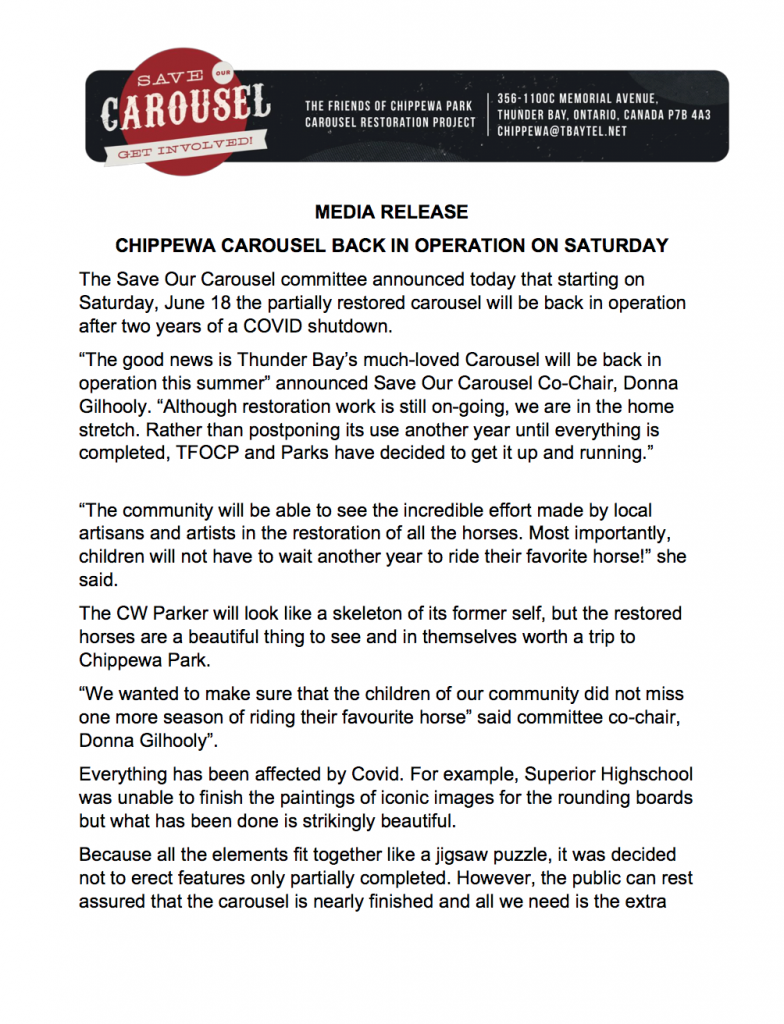
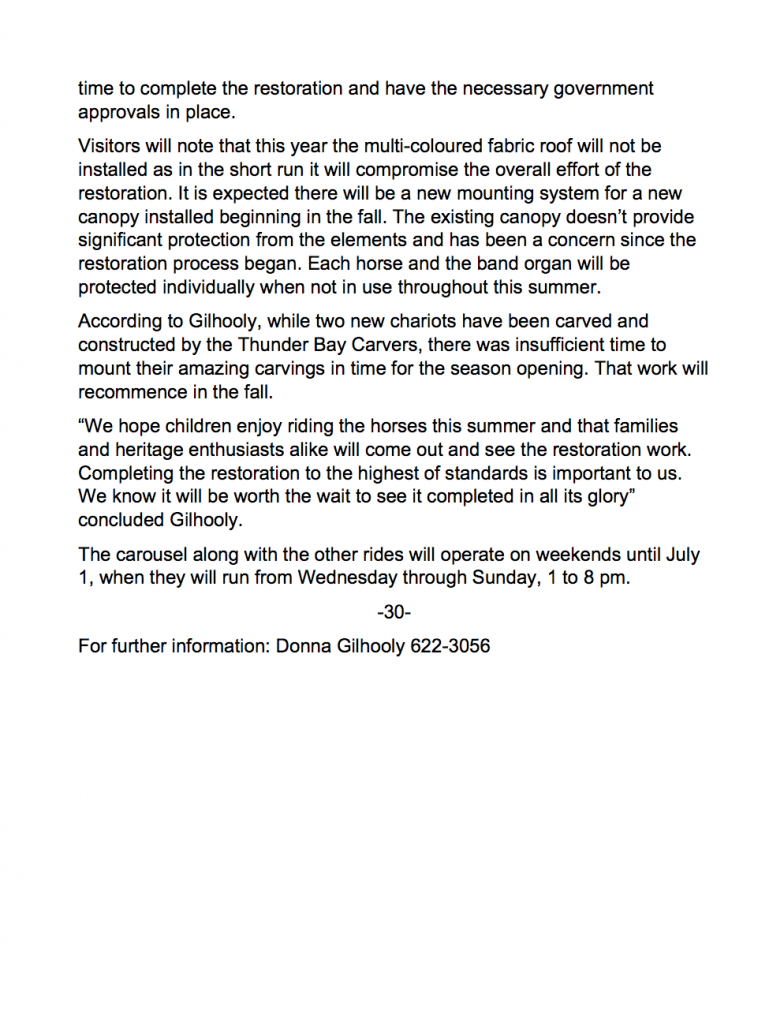
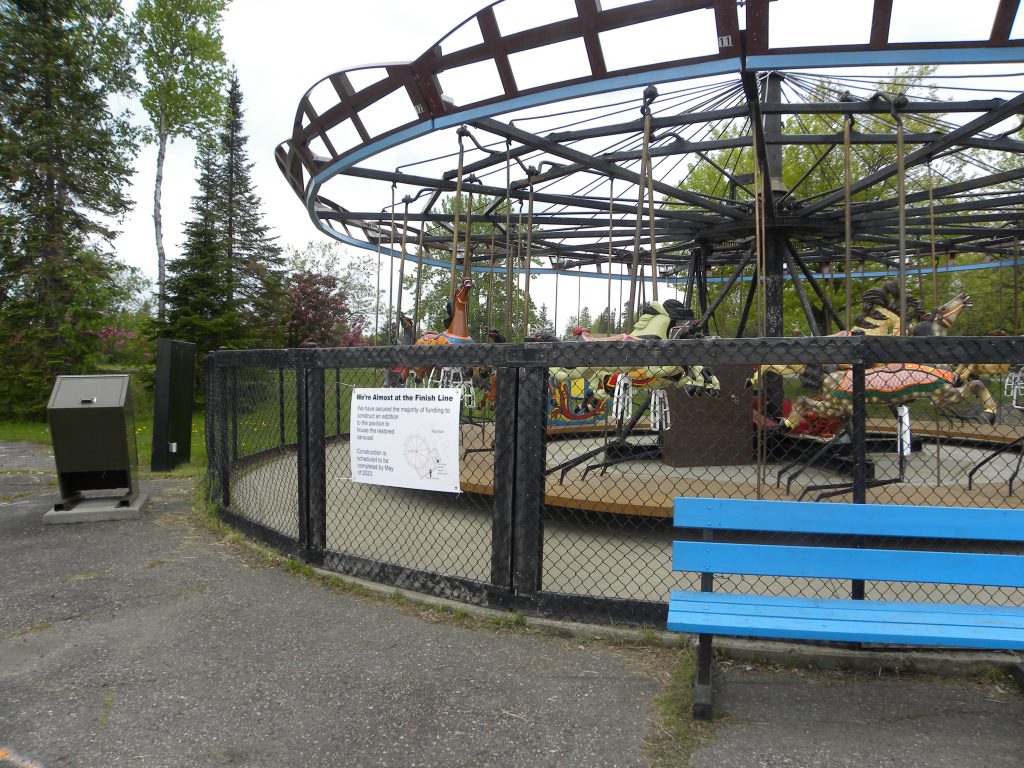
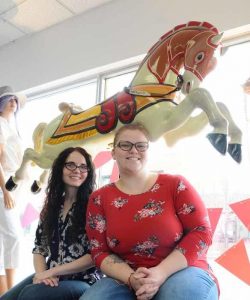
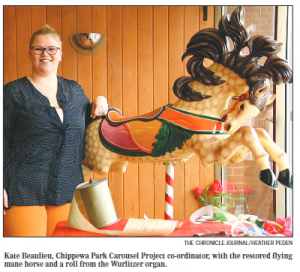
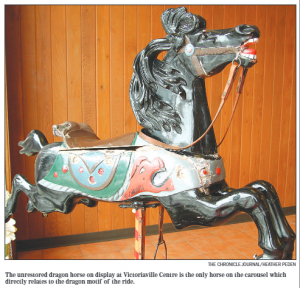
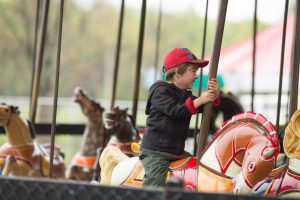 As Published in The Bayview Magazine, Winter 2018/19
As Published in The Bayview Magazine, Winter 2018/19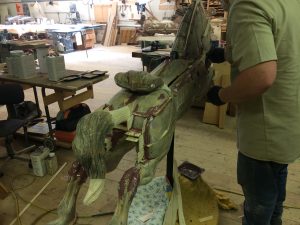
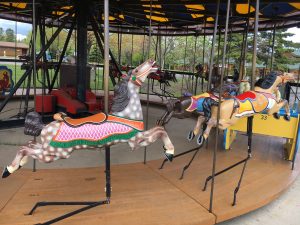
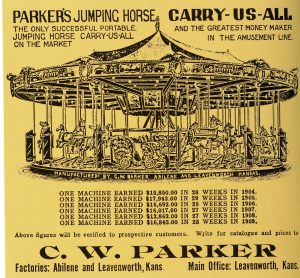 modern carousel.
modern carousel.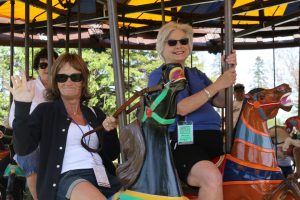
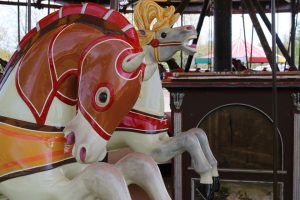 Glow-ups don’t traditionally happen when you’re 100 years old, but that’s exactly what’s happening to the Chippewa Carousel.
Glow-ups don’t traditionally happen when you’re 100 years old, but that’s exactly what’s happening to the Chippewa Carousel.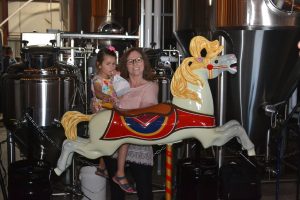 The Save Our Carousel campaign saw a great turnout at their “Sneak Peek” event on Tuesday, May 29 at in the Sleeping Giant Brewery tap room. The event was held as an opportunity to update the community on the ongoing restoration of the Chippewa Park Carousel.
The Save Our Carousel campaign saw a great turnout at their “Sneak Peek” event on Tuesday, May 29 at in the Sleeping Giant Brewery tap room. The event was held as an opportunity to update the community on the ongoing restoration of the Chippewa Park Carousel.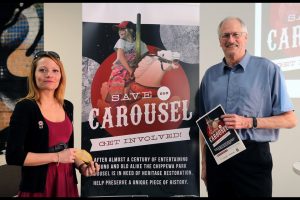 Kateri Banning’s grandfather, Frank Banning, worked for the city of Thunder Bay for 34 years and retired as the manager of the Parks and Recreation Department. Banning has many fond memories of Chippewa Park, both as a child and now with her own children riding the carousel, which is why she decided to adopt a horse and name it after her grandfather.
Kateri Banning’s grandfather, Frank Banning, worked for the city of Thunder Bay for 34 years and retired as the manager of the Parks and Recreation Department. Banning has many fond memories of Chippewa Park, both as a child and now with her own children riding the carousel, which is why she decided to adopt a horse and name it after her grandfather.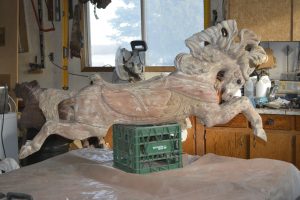 Repairs to many of the hand-carved horses of the century-old carousel at Chippewa Park will be more significant than initially expected, though there is optimism the 14 that had been slated to be restored this winter will be back in place for June.
Repairs to many of the hand-carved horses of the century-old carousel at Chippewa Park will be more significant than initially expected, though there is optimism the 14 that had been slated to be restored this winter will be back in place for June.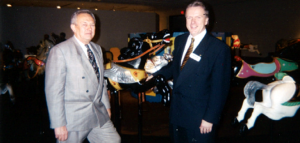 Recent articles on refurbishing the Chippewa Park Carousel, which I referred to as the merry-go-round in my youth, brought to mind a story I fondly recall. This story took place some years ago when I represented the Westfort Ward on city council.
Recent articles on refurbishing the Chippewa Park Carousel, which I referred to as the merry-go-round in my youth, brought to mind a story I fondly recall. This story took place some years ago when I represented the Westfort Ward on city council.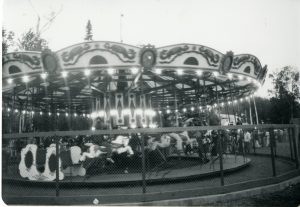 Generations of visitors to Chippewa Park’s fairground have enjoyed a ride on the antique wooden carousel. Such a ride transports us back to a simpler time. The carousel with its hand-carved horses, now close to 90 years old, is a piece of art to be treasured by the citizens of Thunder Bay.
Generations of visitors to Chippewa Park’s fairground have enjoyed a ride on the antique wooden carousel. Such a ride transports us back to a simpler time. The carousel with its hand-carved horses, now close to 90 years old, is a piece of art to be treasured by the citizens of Thunder Bay.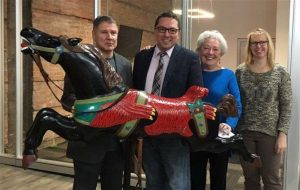 The 28 wooden horses of the carousel at Chippewa Park have probably been ridden for millions of miles, said Donna Gilhooly, co-chair of the carousel restoration committee.
The 28 wooden horses of the carousel at Chippewa Park have probably been ridden for millions of miles, said Donna Gilhooly, co-chair of the carousel restoration committee.